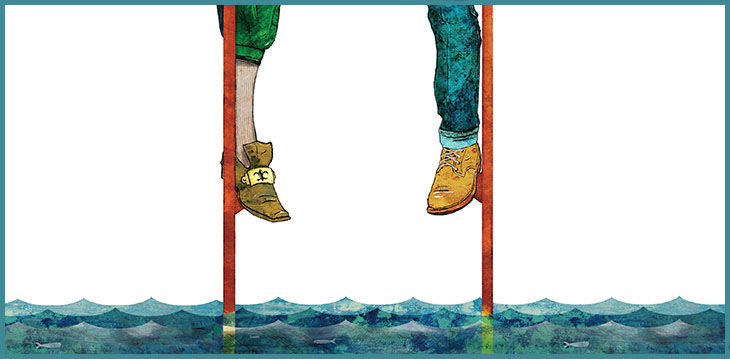Once and future Katrinas: An alternative history

A Tulane University geographer speculates about what once was, what might have been and what still can be in New Orleans" relationship with water. (Illustration by Kenny Harrison)
When hurricanes approached New Orleans in historical times, city dwellers generally did not worry about Katrina-like surge flooding; wind was usually their major concern. Nor did they evacuate the city; indeed, coastal denizens would flock to New Orleans, not away from it, and locals took shelter in sturdy buildings if they left home at all. New Orleanians in the 1800s saved their deepest fears for far deadlier and more destructive disasters epidemics, fires and Mississippi River floods, in that order.
Today it"s the exact opposite. We no longer worry about river floods, and fret no more or less about fire and disease than other Americans. But as for hurricanes, we now dread their fatal surges much more so than their winds, and join our coastal neighbors in fleeing the entire region when a big one approaches.
What changed was our environment, courtesy of our actions.
We scored and scoured the coastal wetlands with oil, gas and navigation canals, allowing saltwater to intrude and marshes to erode.
We drained the backswamp a low part of the floodplain which caused it to sink below sea level, and encouraged its urbanization without ensuring sturdy flood protection.
We put the Mississippi River in a straitjacket of artificial levees, and inadvertently starved the deltaic plain of its two most critical resources, freshwater and sediment.
We viewed every drop of rainwater falling within the metropolis as an enemy, and strove (less than successfully) to pump every drop out, rather than storing as much as possible on the landscape and letting it recharge the groundwater.
We abandoned our architectural tradition of building houses raised on piers, in favor of poured concrete slabs flush with the ground, so that water accumulation in the street became water in our homes.
In sum, we imposed engineering and architectural rigidity on a natural environment that is fundamentally fluid, and convinced ourselves we had mastered it even as it collapsed.
Richard Campanella, a Tulane School of Architecture geographer, is the author of Bienville"s Dilemma, Geographies of New Orleans, Delta Urbanism, Bourbon Street: A History and other books. Find his articles at Richcampanella.com, and reach him at rcampane@tulane.edu or @nolacampanella on Twitter.
This is an excerpt of an article that originally appeared in the September 2015 issue of Tulane magazine. To read the entire article, click here.
